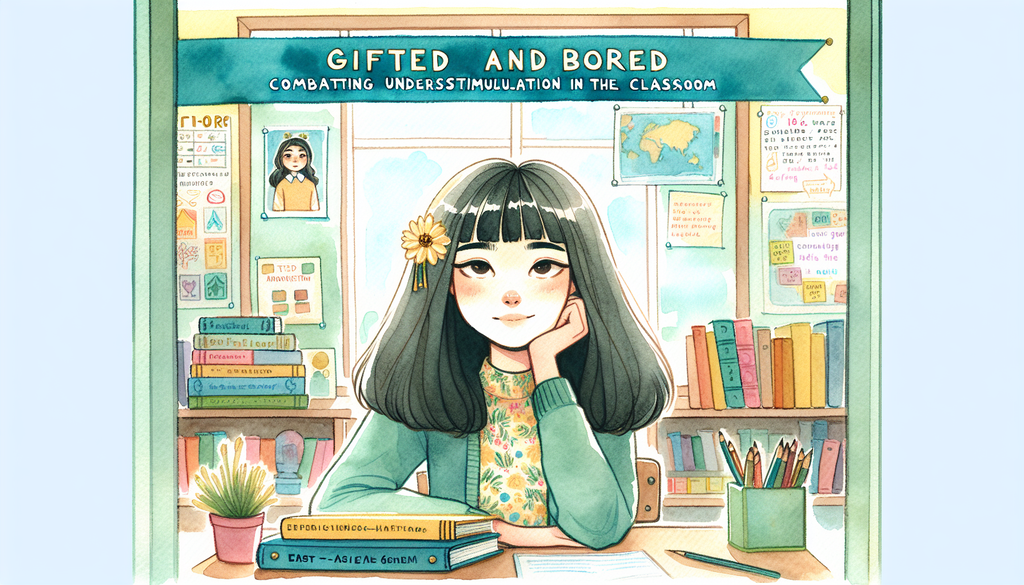Gifted and Bored: Combating Understimulation in the Classroom

Imagine being stuck in a constant state of idle. That’s the reality for many gifted children who find themselves disengaged and understimulated in traditional classes. Luckily, as educators and parents, there are strategies available that can help prevent and treat this classroom affliction. Before we delve into these strategies, it’s important to understand why gifted children often find themselves battling boredom in the first place.
Gifted children have the capacity to learn at a much quicker rate and with more depth than their peers [^1^]. Because they process information rapidly, they often finish assignments earlier and find themselves waiting for others to catch up. This discrepancy in pace and depth can lead to boredom and a lack of engagement [^2^].
Proposed Strategies
Addressing the needs of gifted students can be achieved through several strategies. Let’s explore them.
Adopt Differentiated Instruction
Differentiated instruction is a teaching approach that involves customizing instruction to suit the learning needs of individual students, which is especially useful for gifted learners [^3^]. By incorporating different formative and summative assessments, teachers can cater to the various learning styles and needs in their classrooms, ensuring all students are sufficiently engaged. To learn more about differentiated instruction, check out our post on “Exploring Differentiated Instruction in the Classroom”.
Enrichment Activities
Enrichment activities are tasks that go beyond the basic curriculum to extend learning. This is particularly valuable for gifted students as it helps them apply their theoretical knowledge to real-life situations, thereby enhancing their problem-solving and critical thinking skills. For some practical enrichment ideas, refer to our post on “Maximizing Potential: Enrichment Ideas for the Classroom”.
Independent Learning Projects
Allowing gifted children to undertake independent learning projects under teacher guidance can stimulate their interest and maintain engagement in the class. Our blog post “Unleashing Potential: Enabling Autonomy in Gifted Children” dives deeper into how to implement and manage such projects.
Encourage Peer Tutoring
By asking the gifted students to tutor their peers, these young talents can reinforce their knowledge while developing leadership and communication skills.
Overcoming Challenges
Parents and educators can face a few challenges while trying to implement these strategies. Overcrowded curriculum, limited resources, or the lack of training can act as barriers. However, overcoming these challenges is essential for the maximization of every gifted child’s potential and maintaining their engagement in learning.
When gifted children are given opportunities to learn at their own pace and in their own style, they can remain continually engaged and stimulated. Not only does this prevent boredom, but it also promotes a love for learning, encouraging these young minds to reach their full potential. For more insights, check out our post on “Gifted Underachievers: Turning Potential into Achievement”.
Remember, combating understimulation in the classroom isn’t just about challenging gifted students - it’s about letting them be drivers of their own educations. By doing so, we can keep them engaged, inspired, and most importantly, learning.